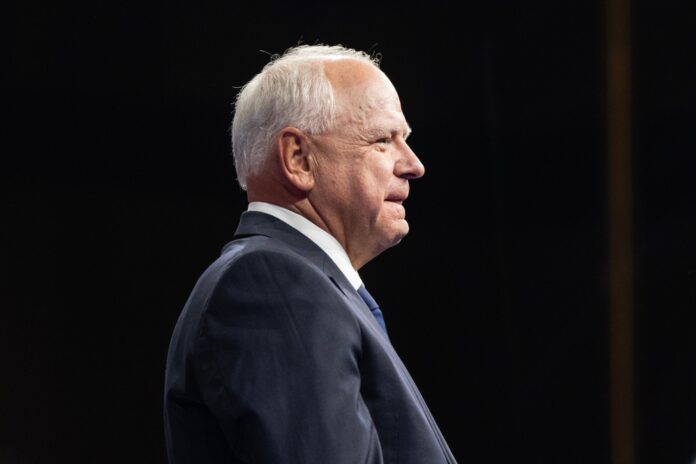Governor Tim Walz calls the surge of immigrants in a small Minnesota town “beautiful diversity,” but are the local school systems ready to deal with the pressures?
At a Glance
- Gov. Tim Walz (D) praised mass immigration in Worthington, Minnesota, as an example of “beautiful diversity.”
- Worthington, with fewer than 14,000 residents, faced significant tax hikes to expand the school district due to an influx of migrant children.
- The increase in immigration is partly due to the federal Unaccompanied Alien Children (UAC) program and a local JBS Pork slaughterhouse attracting migrants.
- During a 2022 gubernatorial debate, Walz highlighted the positive aspects of the town’s diversity, noting the presence of dozens of languages in schools and diverse businesses.
- Worthington’s foreign-born population has grown to almost 30% since 2000.
Governor Tim Walz Celebrates “Beautiful Diversity”
Governor Tim Walz lauded the influx of immigrants in Worthington, Minnesota, spotlighting what he calls “beautiful diversity.”
Does he think local residents agree with him?
In a state renowned for its progressive stance on immigration, Walz’s praise comes as no surprise. According to him, the vibrant cultural mix enriches the community and breathes life into local businesses.
In reality, though, Worthington’s schools now boast students who speak over 50 different languages, reflecting the city’s demographic transformation. Is that conducive to a positive learning environment for children? Really?
However, beneath this celebratory tone lies a stark reality. Worthington, a town with fewer than 14,000 residents, has had to increase taxes substantially to cope with the burgeoning school population resulting from mass immigration. The financial strain has not gone unnoticed, putting pressure on the already stretched resources and staff.
According to local reports, additional tens of millions of dollars were required just to scale the school district to meet the influx of students. Walz’s remarks, therefore, have sparked debate, with some questioning the sustainability of such immigration levels on small-town schools and their resources.
Federal Programs Driving Immigration Surge
One major factor contributing to Worthington’s population increase is the federal Unaccompanied Alien Children (UAC) program. This initiative aids minors arriving without their parents in finding safe havens across America. Moreover, the local JBS Pork slaughterhouse has been a magnet for migrants, offering employment and creating a demand for expanded education facilities.
During the 2022 gubernatorial debate, Walz said, “This beautiful diversity we see out in Worthington when I’m there, you see 50 languages spoken in the school and you see every storefront filled with different types of foods, different types of businesses that are happening. Minnesota needs to continue to do that.”
His standpoint has drawn a clear line between supporters who see diversity as an enriching cultural tapestry and critics who highlight the overstretched educational and financial resources.
Growing Pains of Diversity
Worthington’s foreign-born population has ballooned to almost 30% since 2000. Minnesota consistently ranks high for the number of refugees per capita and spends billions on English as a Second Language (ESL) programs. In 2020, Minnesota taxpayers shelled out nearly $1.2 billion to support over 75,000 English learners.
Yet, the educational outcomes have been less than impressive. From 2019 to 2022, proficiency in reading among fourth graders plummeted, with almost 70% failing to meet basic standards. Math proficiency among eighth graders experienced a similar decline. During the 2021-2022 school year, nearly a third of Minnesota students were chronically absent, missing 10% or more school days.
Such statistics raise questions about the sustainability of Governor Walz’s vision of “beautiful diversity.” As Vice President Kamala Harris’s running mate, Walz continues to advocate for mass immigration and refugee resettlement while emphasizing the moral, economic, and cultural benefits. His comments, however, have ignited debates about whether the state’s infrastructure can handle the rapid changes.
We all know that telling lies like this isn’t a winning strategy – so why is he doing it?
Do the Democrats know they don’t actually need to win?

